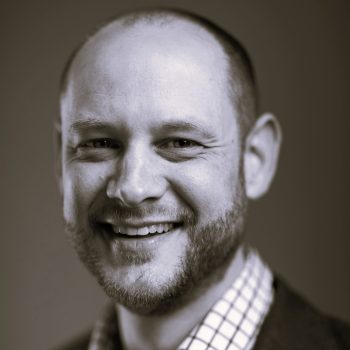
October 31st, 2025
Beyond the Budget: What Really Fuels Collaboration
When budgets tighten and focus narrows to “core business”, collaboration can be seen as a “nice-to-have”. For those of us who believe in collective impact, it can be hard to watch this retreat to individual silos. How do we sustain collaboration when the funding dries up?
For the last decade, Leadership Lab and Grow Waitaha facilitated a leadership network across Canterbury supporting the Kāhui Ako (Communities of Learning) model, an initiative designed to foster collaboration within the New Zealand education sector. While the Kāhui Ako Project across Aotearoa was explicitly funded and formally structured, we found that even with funding, the success (or otherwise) of collaboration comes down to the collaborative mindset of the people involved.
The funding provided the space for each Kāhui Ako (clusters of schools and early childhood centres, usually grouped geographically) to start and prioritise collaboration. It empowered those who were already ‘on the waka’, those who would have been sharing and collaborating already if only they had the resourcing. Unfortunately, the funding didn’t guarantee success for every Kāhui Ako. From what we saw, the best results came from those who truly valued collaboration.
Those who had a clear reason to collaborate often found it easier to foster that collaborative culture. They identified their compelling vision or shared challenge, which became the ‘why’ that bound their network together. Once that was clear, they identified what they could each contribute to address the challenge.
“Nā tō rourou, nā taku rourou, ka ora ai te iwi”
– with your food basket and mine, the people will thrive.
Importantly, the Kāhui Ako who thrived identified their compelling vision before waiting for relationships across the network to spring up out of nowhere. They found that the trust grew along the way once they were clear on their shared challenge and the need to collaborate.
On a practical level, when we looked at what the different Kāhui Ako were doing, we quickly saw a distinction between effort and impact. Formal, high-cost initiatives – like whole-day, all-staff professional development events – were often not as high-impact as expected. In contrast, the informal, low-effort practices often resulted in stronger relationships, more trust, more meaningful collaboration, and better outcomes according to their own objectives. Practices like proactively sharing resources, reaching out for help across traditional silo boundaries, and my favourite low-cost, high-impact strategy: just inviting the wider network to join programmes and events that were going to run anyway. The Kāhui Ako that embraced these more relational practices tended to be the ones that gained the most momentum.
This year, the funding for this Kāhui Ako model was discontinued across Aotearoa. Leaders within each cluster are left with the question of how to sustain collaboration when it’s no longer explicitly funded. I think the answer can also help those wondering how to begin fostering collaboration on a tight budget. The lessons can be drawn from what worked best when it was funded: get everyone clear on the shared compelling vision; foster a culture where collaboration is valued over silos; and prioritise options that have the biggest impact for minimal effort. That’s how the people will thrive.
Stephen McConnachie Consultant Leadership Lab and Managing Director of Think e-Learning
You can read more stories of impact as well as thought-provoking pieces from across our Leadership Lab ecosystem by signing up for this monthly pānui (see bottom of www.leadershiplab.co.nz) or by connecting with us on our Leadership Lab LinkedIn and Facebook . You can find an incredible library of resources that you can read, listen or watch on our website here.
Thanks heaps for your interest.

October 31st, 2025
Beyond the Budget: What Really Fuels Collaboration
When budgets tighten and focus narrows to “core business”, collaboration can be seen as a “nice-to-have”. For those of us who believe in collective impact, it can be hard to watch this retreat to individual silos. How do we sustain collaboration when the funding dries up?
For the last decade, Leadership Lab and Grow Waitaha facilitated a leadership network across Canterbury supporting the Kāhui Ako (Communities of Learning) model, an initiative designed to foster collaboration within the New Zealand education sector. While the Kāhui Ako Project across Aotearoa was explicitly funded and formally structured, we found that even with funding, the success (or otherwise) of collaboration comes down to the collaborative mindset of the people involved.
The funding provided the space for each Kāhui Ako (clusters of schools and early childhood centres, usually grouped geographically) to start and prioritise collaboration. It empowered those who were already ‘on the waka’, those who would have been sharing and collaborating already if only they had the resourcing. Unfortunately, the funding didn’t guarantee success for every Kāhui Ako. From what we saw, the best results came from those who truly valued collaboration.
Those who had a clear reason to collaborate often found it easier to foster that collaborative culture. They identified their compelling vision or shared challenge, which became the ‘why’ that bound their network together. Once that was clear, they identified what they could each contribute to address the challenge.
“Nā tō rourou, nā taku rourou, ka ora ai te iwi”
– with your food basket and mine, the people will thrive.
Importantly, the Kāhui Ako who thrived identified their compelling vision before waiting for relationships across the network to spring up out of nowhere. They found that the trust grew along the way once they were clear on their shared challenge and the need to collaborate.
On a practical level, when we looked at what the different Kāhui Ako were doing, we quickly saw a distinction between effort and impact. Formal, high-cost initiatives – like whole-day, all-staff professional development events – were often not as high-impact as expected. In contrast, the informal, low-effort practices often resulted in stronger relationships, more trust, more meaningful collaboration, and better outcomes according to their own objectives. Practices like proactively sharing resources, reaching out for help across traditional silo boundaries, and my favourite low-cost, high-impact strategy: just inviting the wider network to join programmes and events that were going to run anyway. The Kāhui Ako that embraced these more relational practices tended to be the ones that gained the most momentum.
This year, the funding for this Kāhui Ako model was discontinued across Aotearoa. Leaders within each cluster are left with the question of how to sustain collaboration when it’s no longer explicitly funded. I think the answer can also help those wondering how to begin fostering collaboration on a tight budget. The lessons can be drawn from what worked best when it was funded: get everyone clear on the shared compelling vision; foster a culture where collaboration is valued over silos; and prioritise options that have the biggest impact for minimal effort. That’s how the people will thrive.
Stephen McConnachie Consultant Leadership Lab and Managing Director of Think e-Learning
You can read more stories of impact as well as thought-provoking pieces from across our Leadership Lab ecosystem by signing up for this monthly pānui (see bottom of www.leadershiplab.co.nz) or by connecting with us on our Leadership Lab LinkedIn and Facebook . You can find an incredible library of resources that you can read, listen or watch on our website here.
Thanks heaps for your interest.


